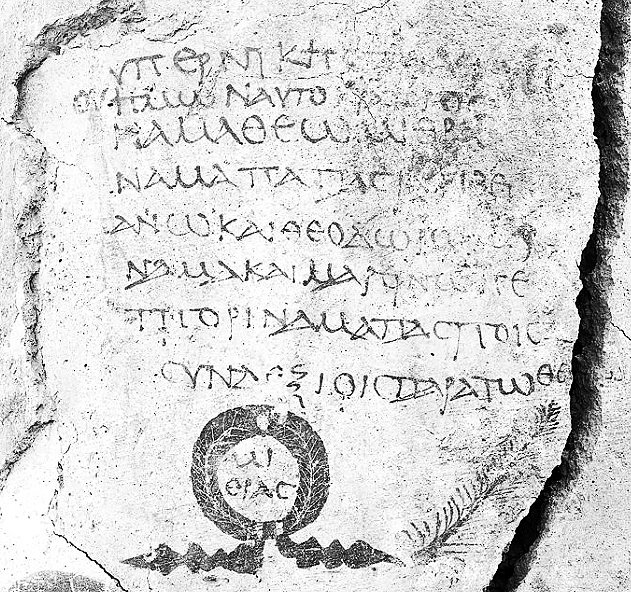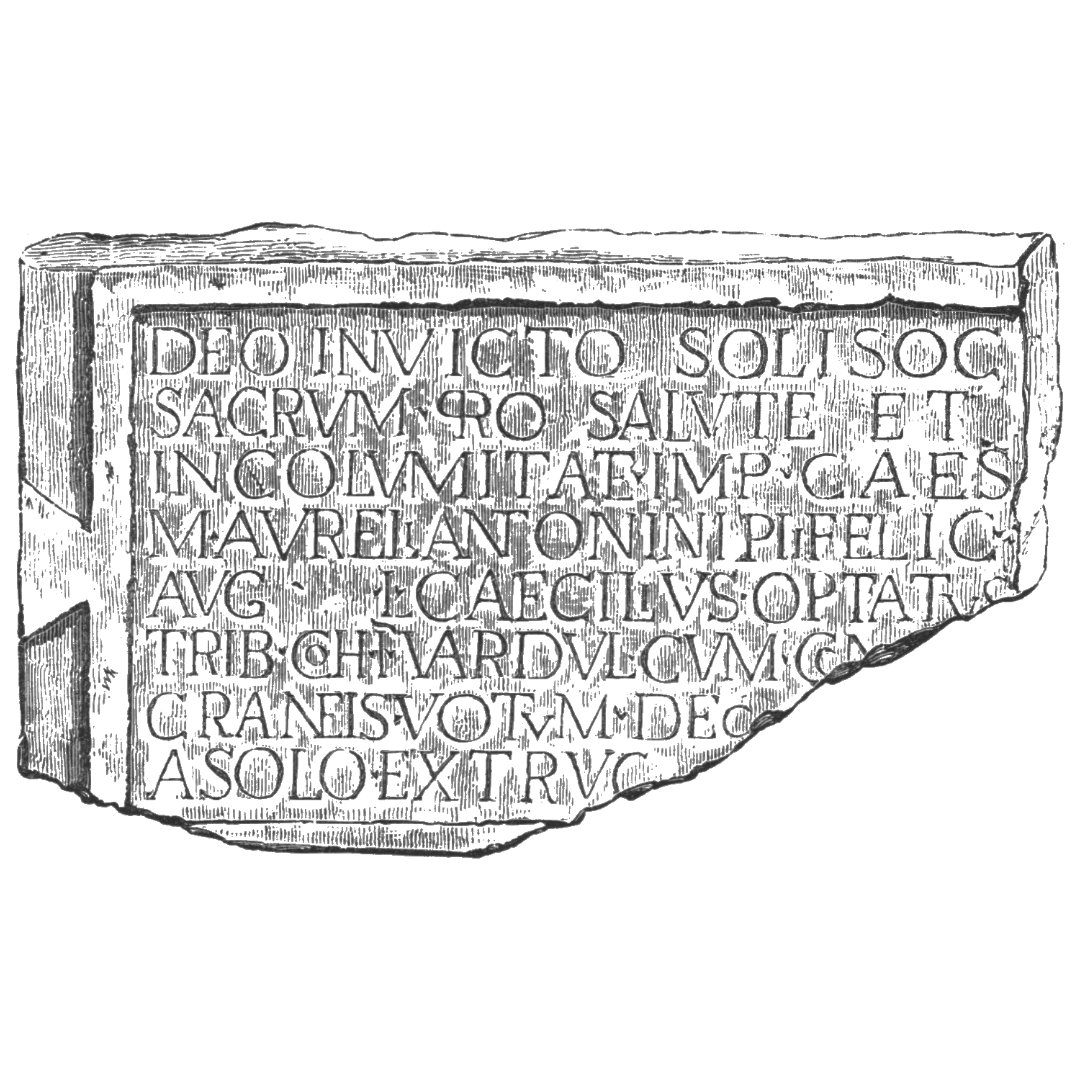
Caracalla
Marcus Aurelius Antoninus
Alias Lucius Septimius Bassianus
Emperor Caracalla ordered one of Rome’s largest temples to the god Mithras to be built in the baths bearing his name.
Biography
of Caracalla
- Caracalla was a syndexios (probably a Pater) of the Mithraeum of the Baths of Caracalla.
- Born in Lugdunum, Lugdunensis, Gallia.
- Active c. 188 – 217 in Roma, Latium (Italia).
- He was an Emperor.
TNMP 273
Caracalla, born Lucius Septimius Bassianus and later known as Marcus Aurelius Severus Antoninus Augustus, was a Roman emperor notorious for his tyrannical rule from 198 to 217 AD. Although there is no direct evidence that Caracalla was formally initiated into the Mithraic cult, his significant architectural contribution, exemplified by the great Mithraeum in the famous Baths of Caracalla in Rome, suggests a strong affinity or patronage.
In addition, his interest in Mithraism is highlighted by a numismatic artifact from his era [TNMM 553]. A coin from Trapezus in Pontus that features a bust of Caracalla on the obverse and Mithras on the reverse, who is shown wearing a radiate Phrygian cap. This imagery on the coin not only exemplifies Caracalla’s patronage of Mithraism but also underscores the importance of Mithras’ cult among Roman military and administrative circles.
Coin from Trapezus, Pontus, showing Caracalla and Mithras with horse.
Wildwings.com
Caracalla’s religious practices included the worship of Serapis, the Egyptian deity who blended Greek and Egyptian cultic traditions. Serapis was primarily worshipped as the god of healing and the underworld, which suited Caracalla’s quest for divine protection and connection with the eternal power. His worship of Serapis was part of a wider trend towards eastern deities, which included a deep devotion to the goddess Isis.
Caracalla’s reign was characterised by an eclectic approach to religion, reflecting the cosmopolitan nature of the Roman Empire during the Severan dynasty. This mixture of religious practices illustrated his attempt to appeal to a diverse empire made up of different cultural and religious identities.
—Andreu Abuín (2024) The New Mithraeum
The sons of Septimius Severus, Caracalla and Geta, were strong supporters of Mithras, and part of the baths of Caracalla in Rome was furnished as a Mithraeum.
—Vermaseren (1960) Mithras, the secret god
But in general, much evil was continually spoken of him by everybody; in fact, people no longer called him Antoninus, but some called him Bassianus, his original name, others Caracallus, as I have stated, and yet others Tarautas, from the nickname of a gladiator who was most insignificant and ugly in appearance and most reckless and bloodthirsty in spirit.
—Cassius Dio (229) Historia Romana, LXXIX, 9:3
We find no historiographical references to the worship of Mithras in the Severan dynasty, neither by Septimius Severus nor by Caracalla. According to tradition, the cult developed greatly during their reigns and gained imperial favour, but this devotion is not recorded in any of their biographies. However, in the epigraphic aspect we find a dedication by the priest of the domestic cult of the imperial household, in connection with the Mithraic cult:
[TNMM 453]
Here Mithras appears as the protector of the monarch and of the entire imperial household. According to some authors, this dedicatee was a domestic priest who was not a dignitary of an official hierarchy, and therefore does not show a preference of the emperor or the imperial house, but perhaps his own.
Dedications to both Septimius Severus and Caracalla by military officers, imperial legates, freedmen and members of the provincial administration devoted to Mithras are numerous. Here is an example referring to Caracalla; an inscription dated 211-217 in Siscia, Upper Pannonia (CIL III 3958):
[TNMM 783]
Another inscription from 217 in Bremenium (Britain) by a tribune to the god Mithra and for the health of the emperor Caracalla (RIB 1272):
[TNMM 566]
There are many examples of dedicators who were military officers devoted to Mithras; C. Iulius Septimius Castinus, governor of Lower Pannonia from 208 to 211, consul in 212-13 and governor of Dacia in 217. He erected an altar to Mithra at Aquinum during the reign of Caracalla. Many officials in other areas followed his example.
References
- American Institute for Roman Culture (2012) Mithraeum at the Baths of Caracalla
- Bricault, Veymers, Amoroso et al. (2021) The Mystery of Mithras. Exploring the heart of a Roman cult
- Bricault; Roy (2021) Les cultes de Mithra dans l'Empire Romain
- Cassius Dio (229) Historia Romana
- Eberhard Sauer (1999) The End of Paganism in the North-Western Provinces of the Roman Empire. The exemple of the Mithras cult
- Epigraphic Database Heidelberg. Tabula ansata of Lucius from Bremenium in EDH
- Epigraphik-Datenbank Clauss / Slaby. Altar by Aurelius Eutyches from Siscia in EDCS
- Epigraphik-Datenbank Clauss / Slaby. Altar by Flavius Lucilianus from Aveia in EDCS
- Getty (2022) Statuette of Mithras on Horseback
- José Ortiz Córdoba (2018) Reclutamiento y unidades militares en las colonias romanas de Lusitania
- Maarten Jozef Vermaseren (1960) Mithra, ce dieu mystérieux
- Marcelle Duchesne-Guillemin (1975) Une statuette équestre de Mithra. Études Mithraiques: Actes du 2e Congres International, Teheran, 1-8 Septembre 1975. Acta Iranica IV
- Mila Navarro-Caballero (1997) Les dépenses publiques des notables des cités en Hispania Citerior sous le Haut-Empire. Revue des Études Anciennes
- Paloma Aguado García (2001) ‘El culto de Mitra en la época de Caracalla.’ Gerión, 19, 559-568.
- Roman Inscriptions of Britain. Tabula ansata of Lucius from Bremenium in RIB
- Vittoria Canciani (2022) Archaeological Evidence of the Cult of Mithras in Ancient Italy
- Wildwings.com (2022) Ancient Coinage of Pontos, Trapezus
Mentions
Altar by Aurelius Eutyches from Siscia
TNMM 783
This altar, dedicated to Sol Invictus Mithras by a certain Eutyches for the health of the Emperor Caracalla, was found in Sisak, Croatia, in 1899.
Altar by Flavius Lucilianus from Aveia
TNMM 778
This altar for the completion of a temple to Sol Invictus by Flavius Lucilianus was found in Fossa, Italy.
Column with inscription from Dura Europos
TNMM 468
The inscription pays homage to the emperor, probably Caracalla, to Mithras, the fathers, the petitor and the syndexioi.
Medallions with Mithras from Trapezus
TNMM 553
These bronze medallions associates the image of several Roman emperors with that of Mithras, usually as a rider, in the province Pontus.
Mithraeum of the Baths of Caracalla
TNMM 16
The Mitreo delle terme di Caracalla is one of the largest temples dedicated to Mithras ever found in Rome.
Mithras on a horse
TNMM 574
This small bronze statuette of Mithras riding a horse is composed of two pieces.
Tabula ansata of Lucius from Bremenium
TNMM 566
This inscription commemorates the building of a mithraeum in Bremenium with fellow worshippers of Mithras.








Comments
Add a comment